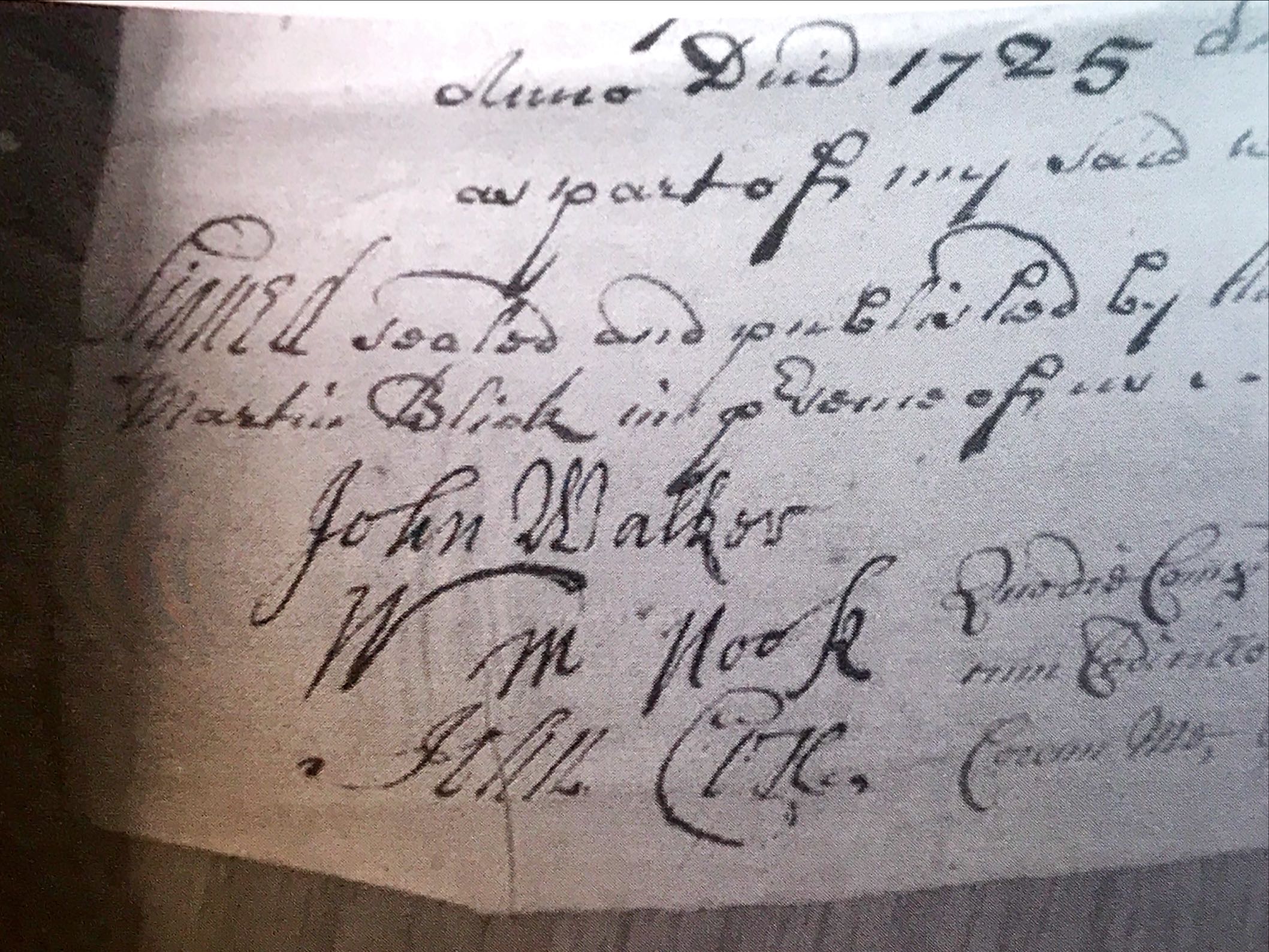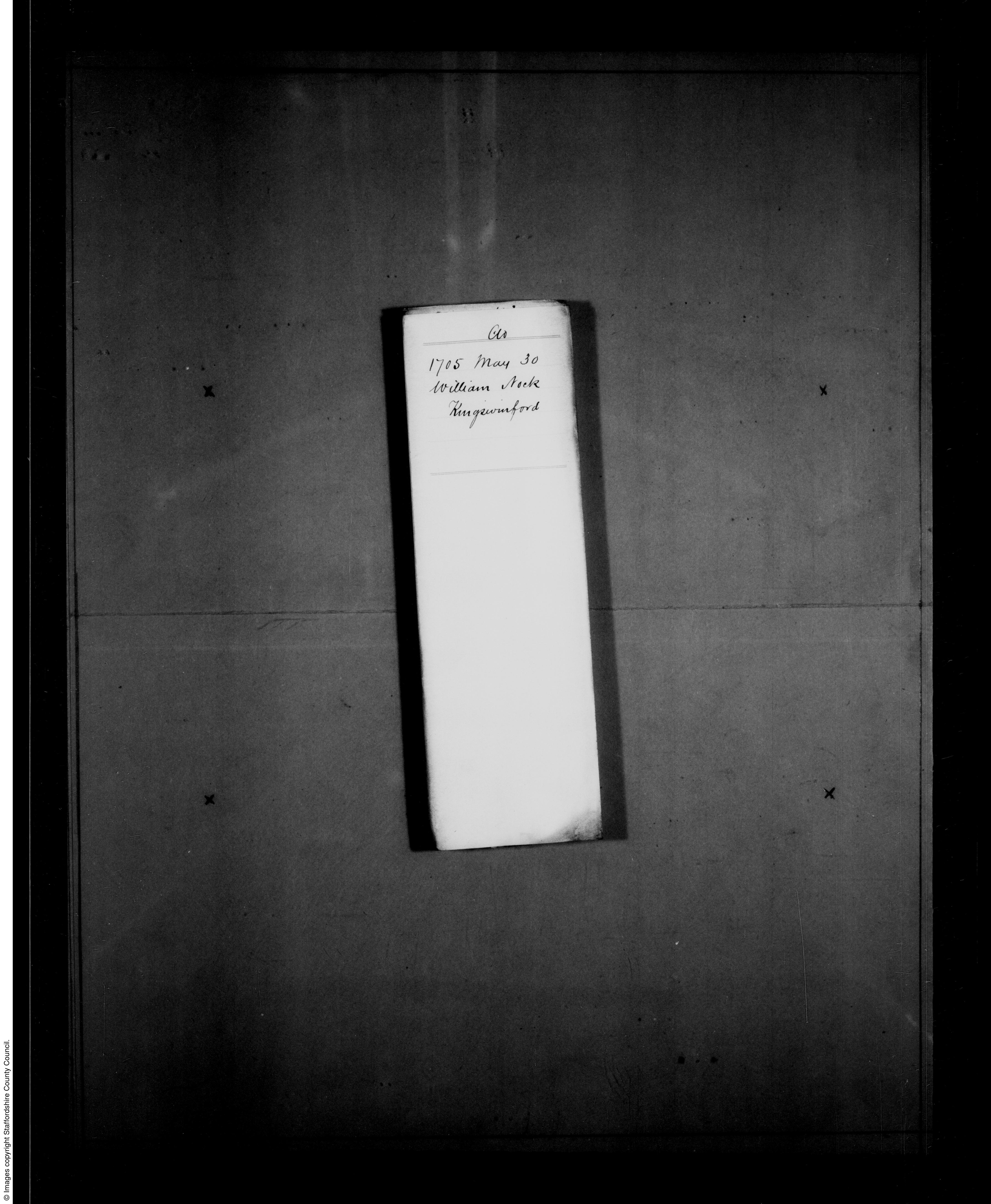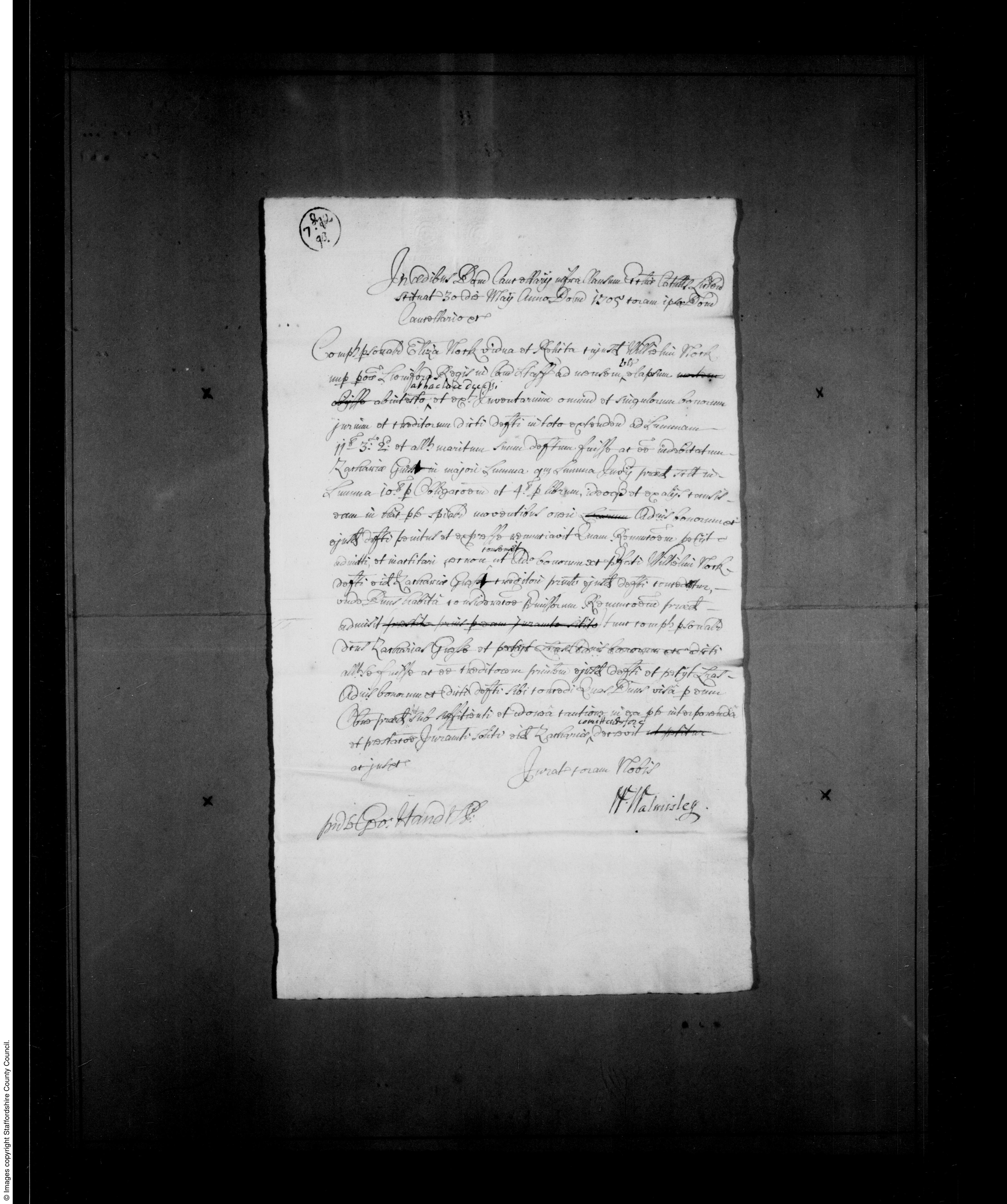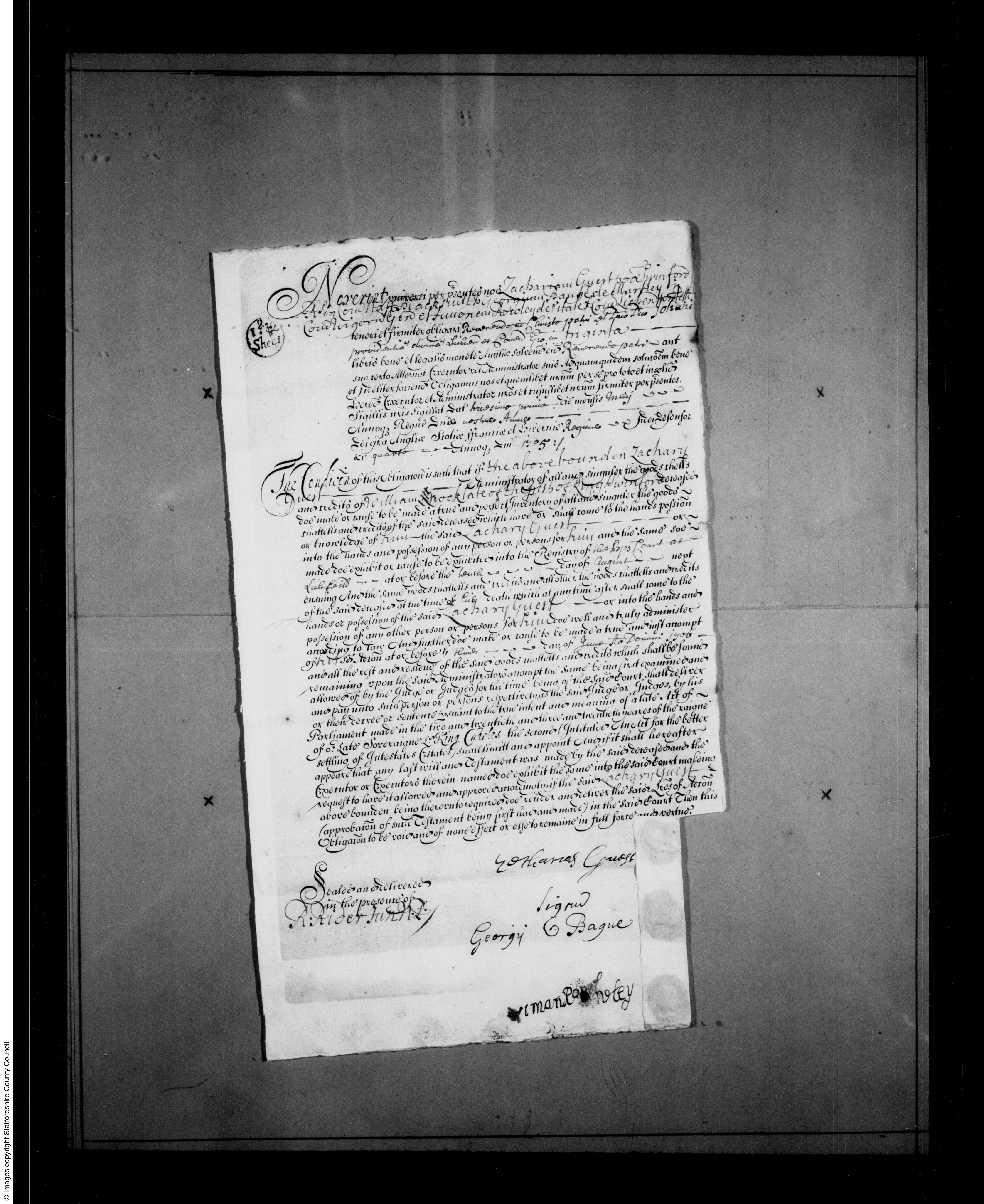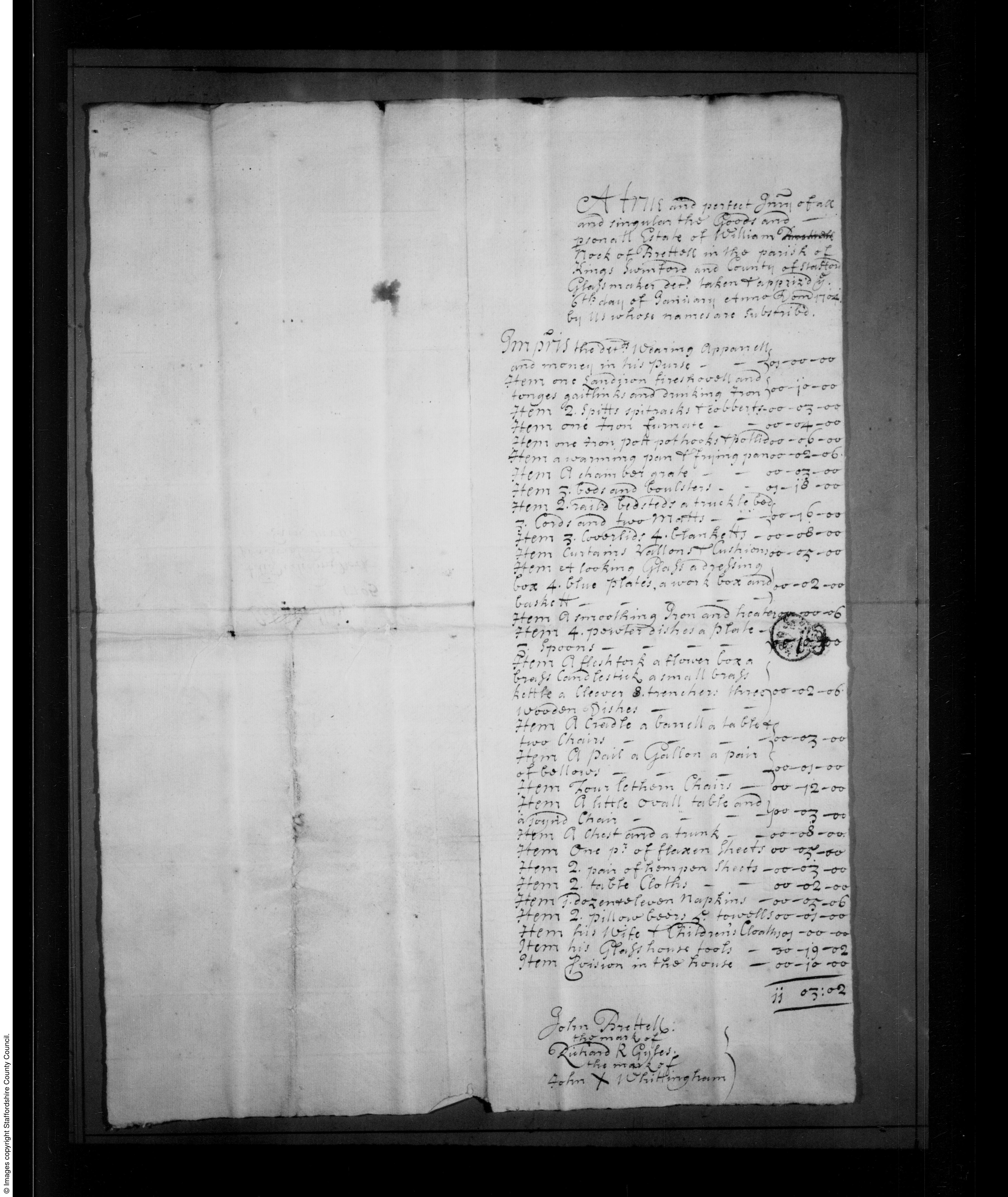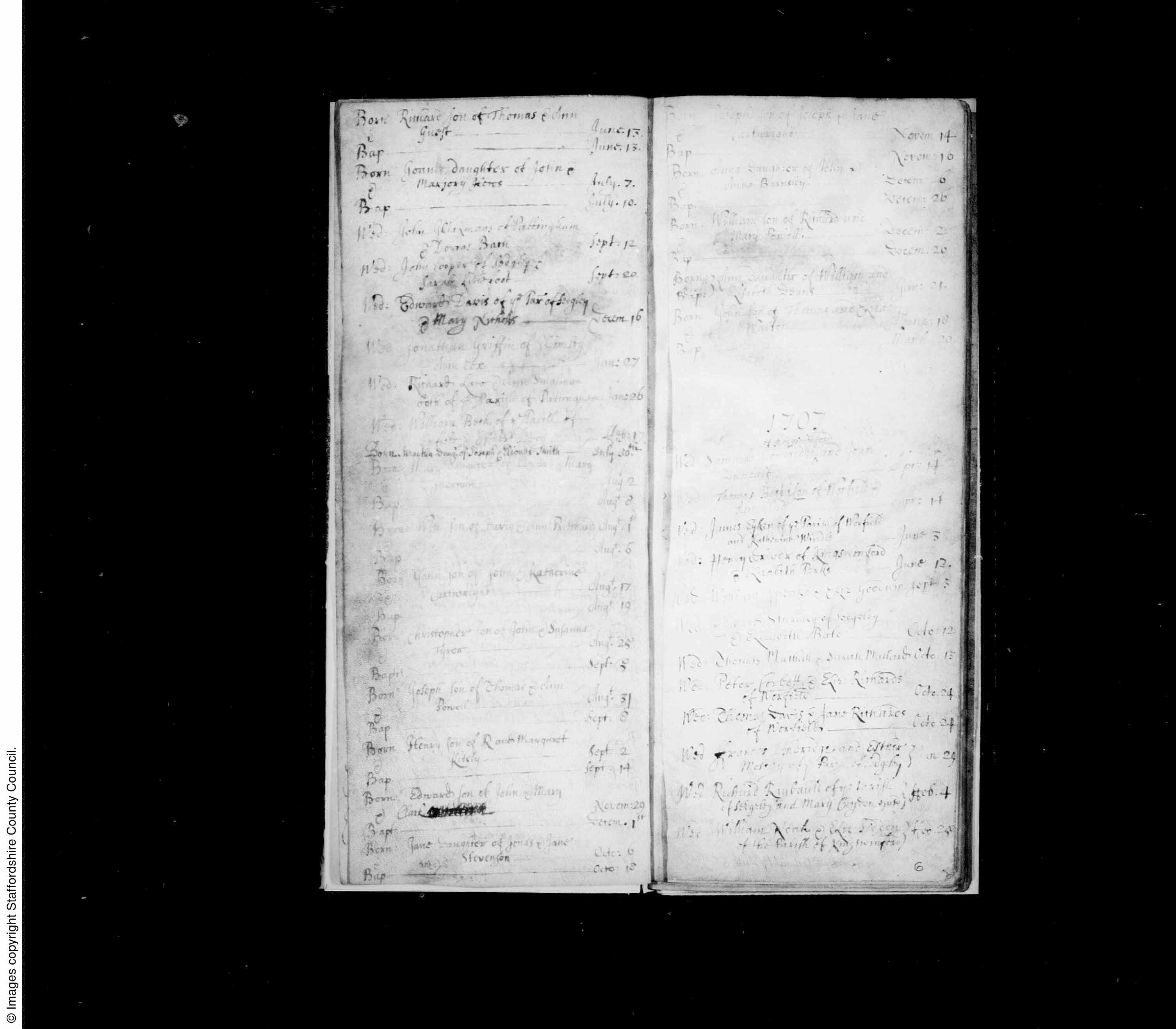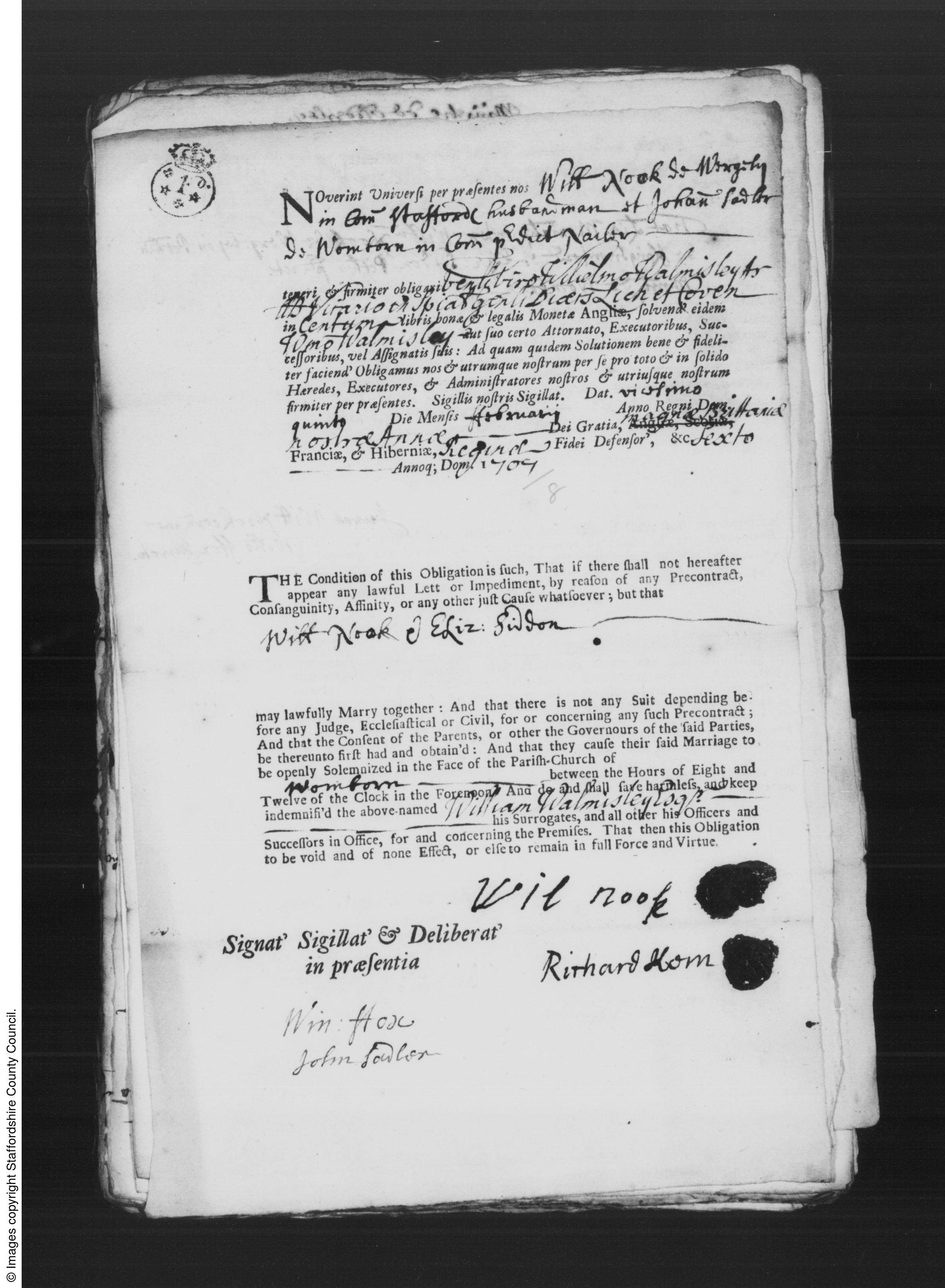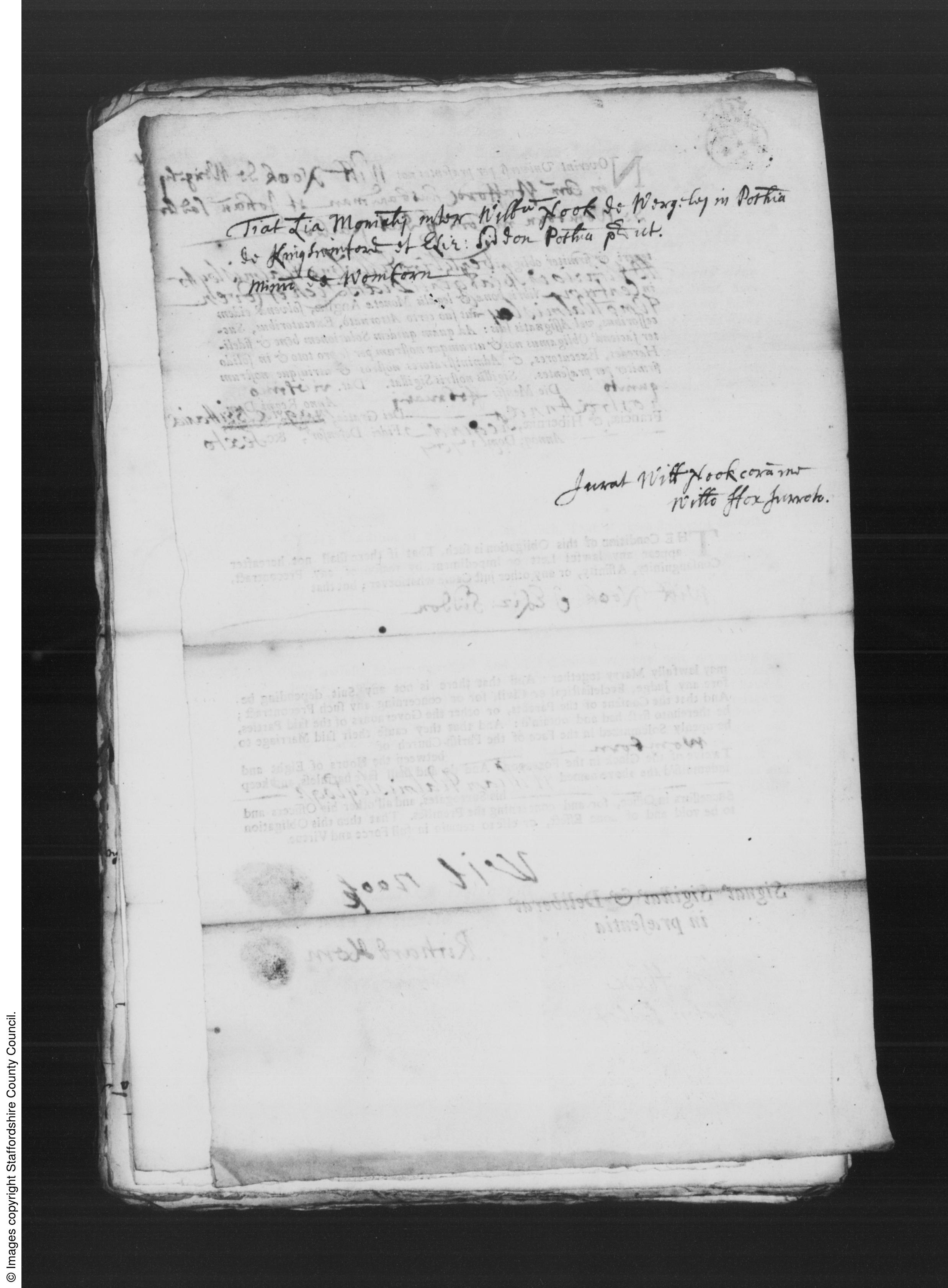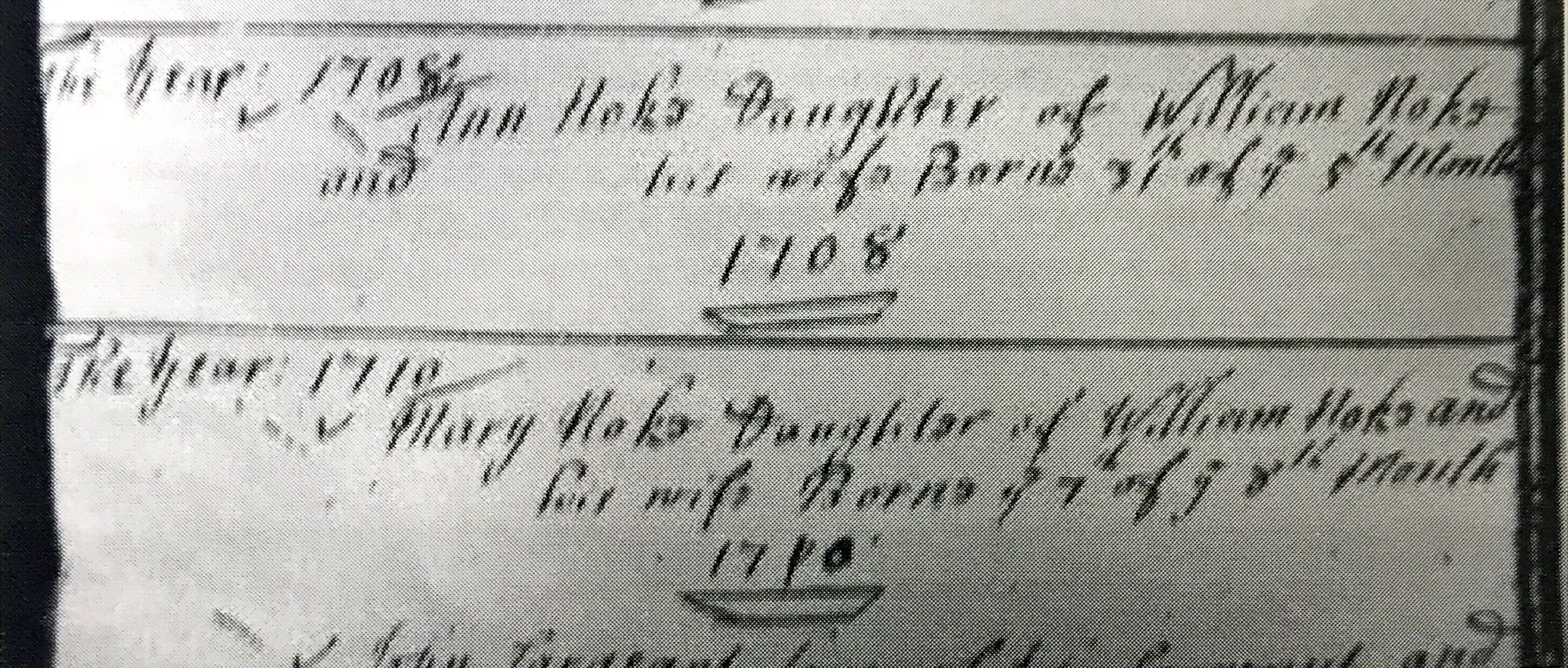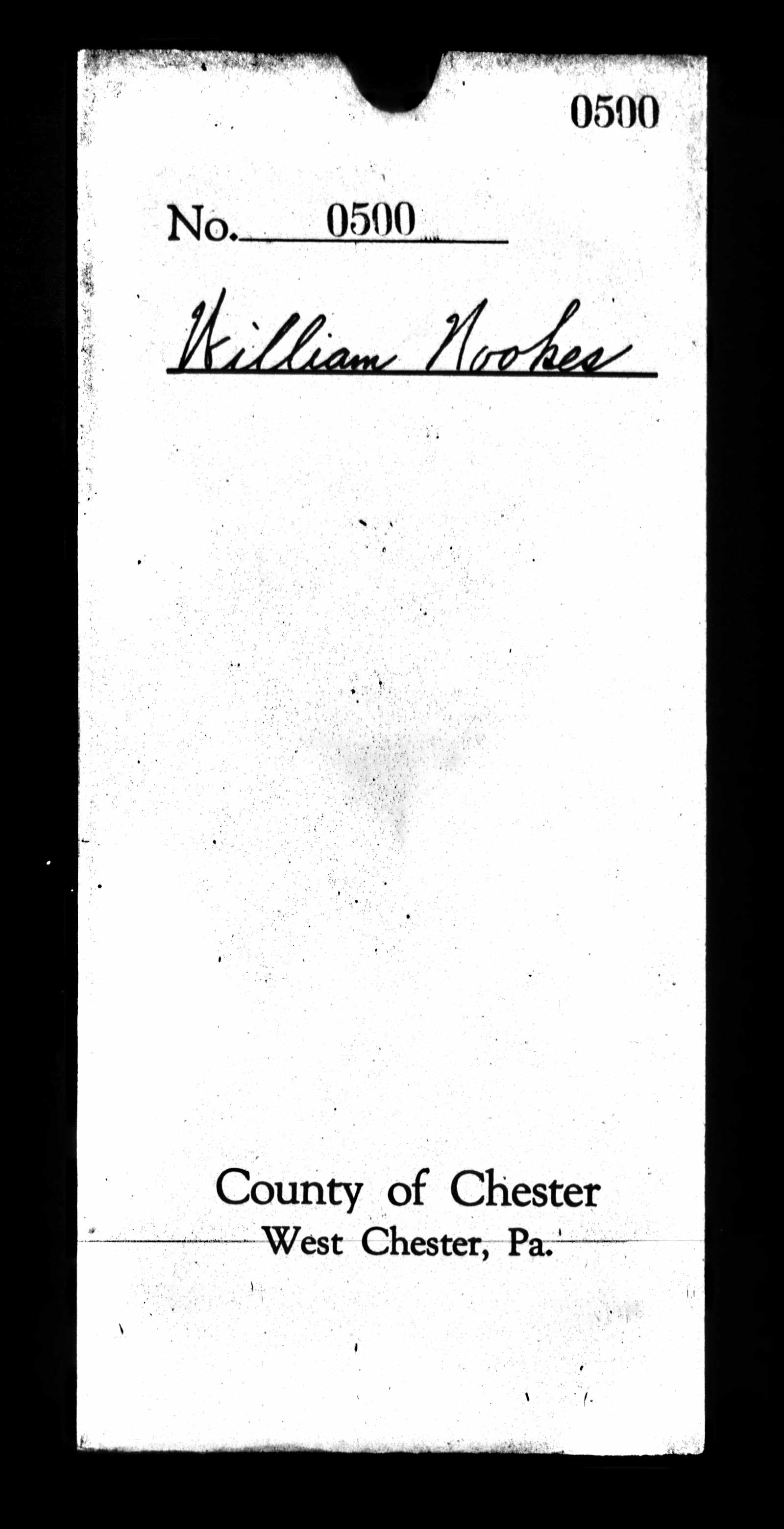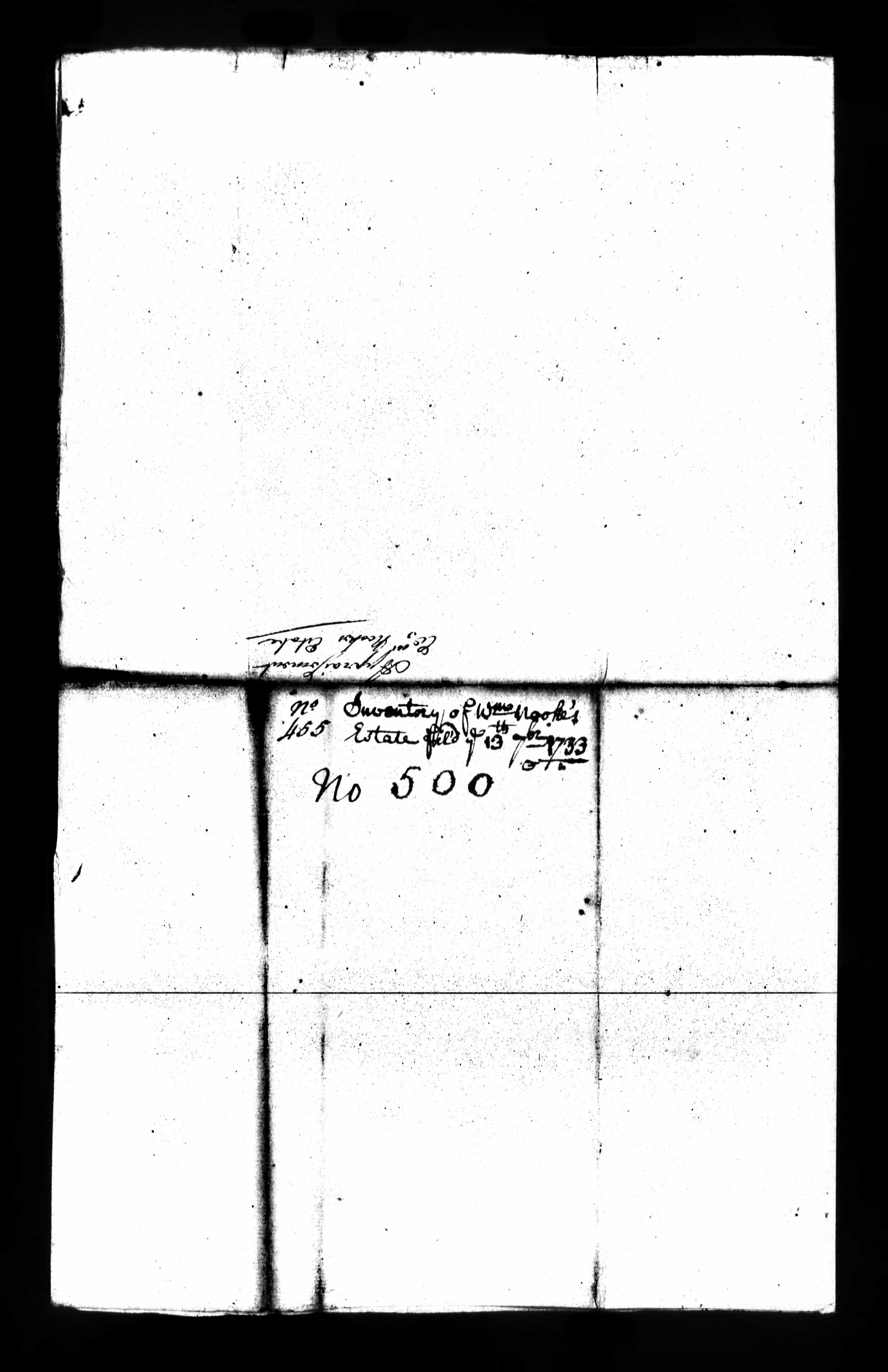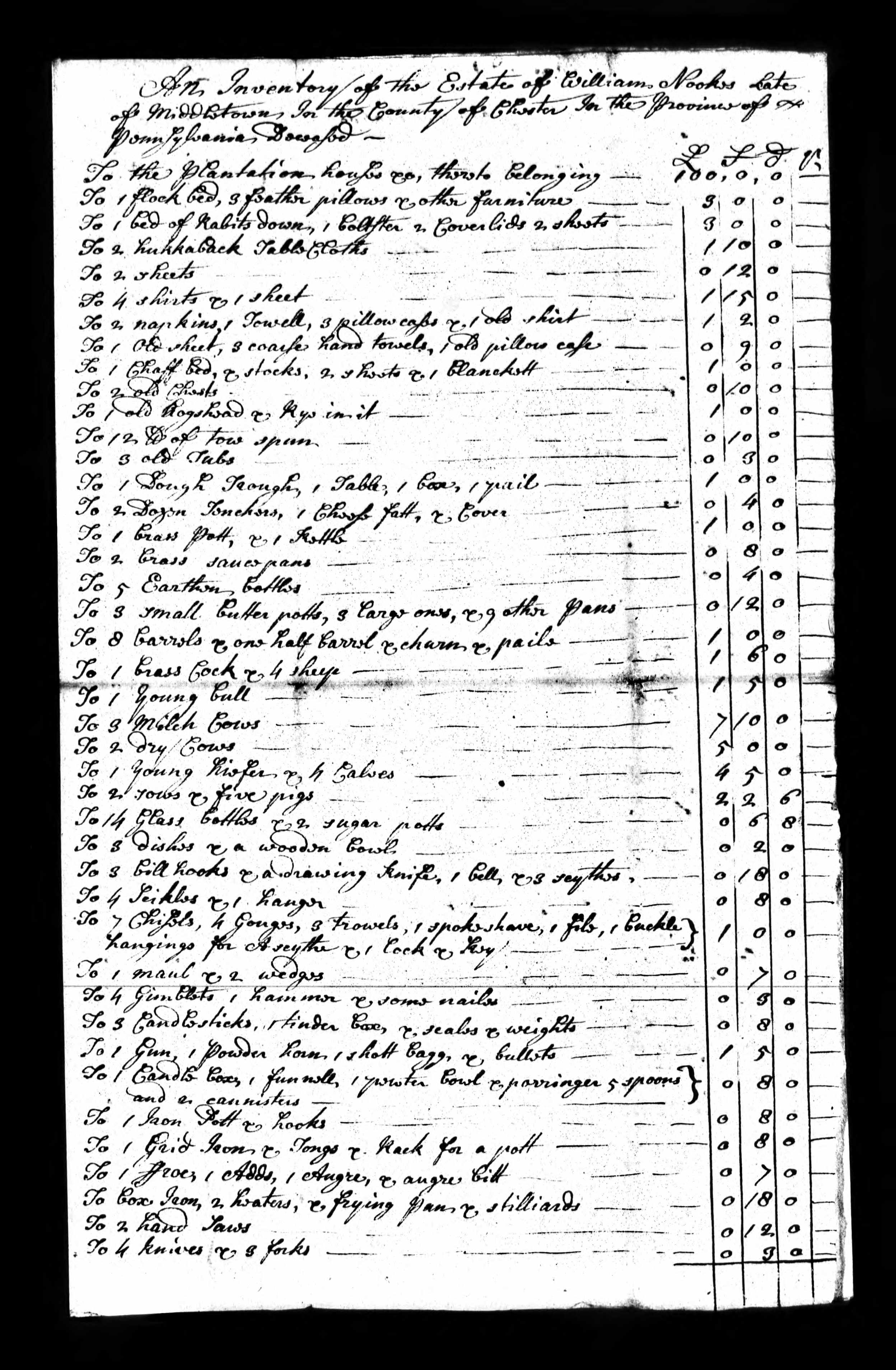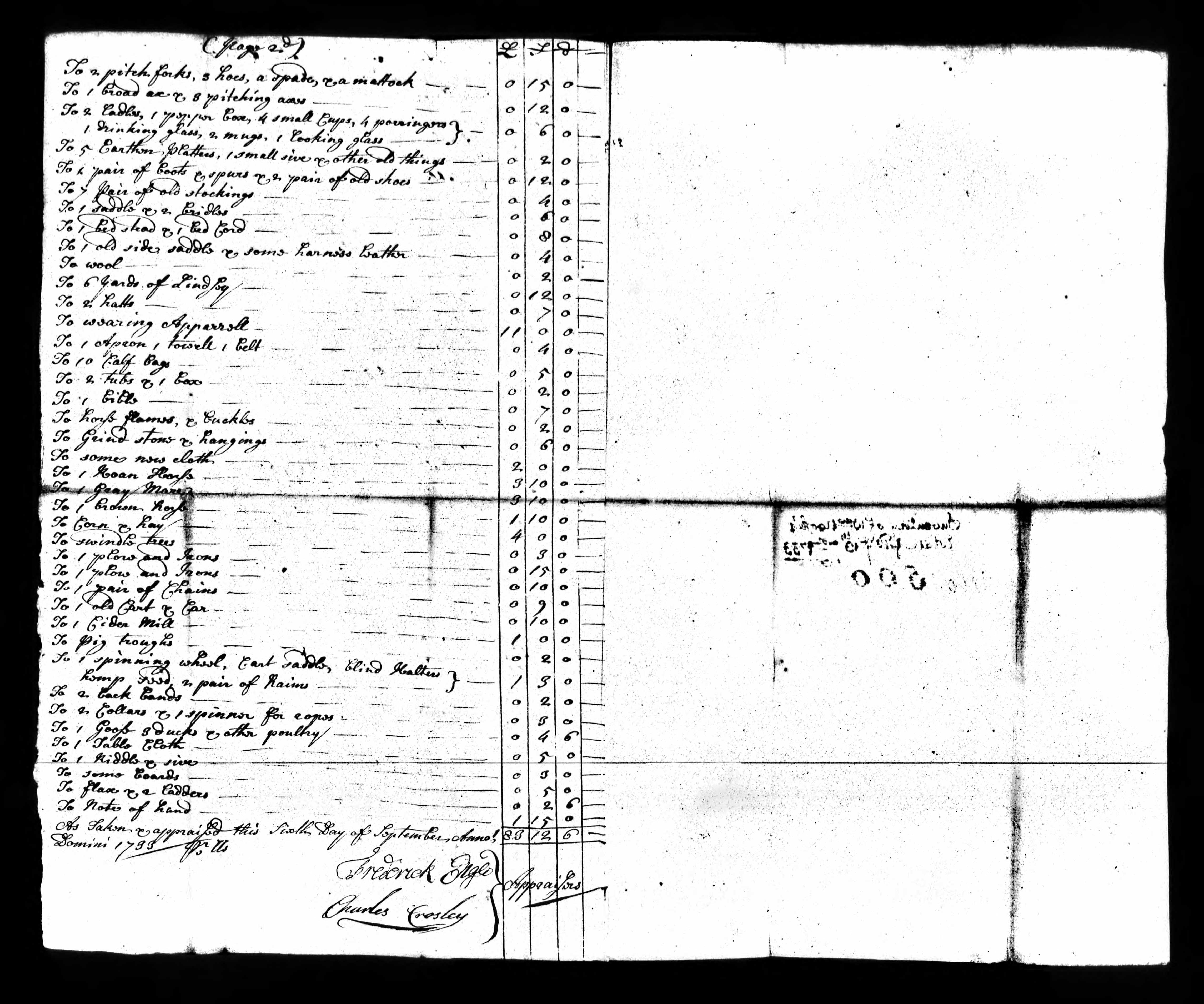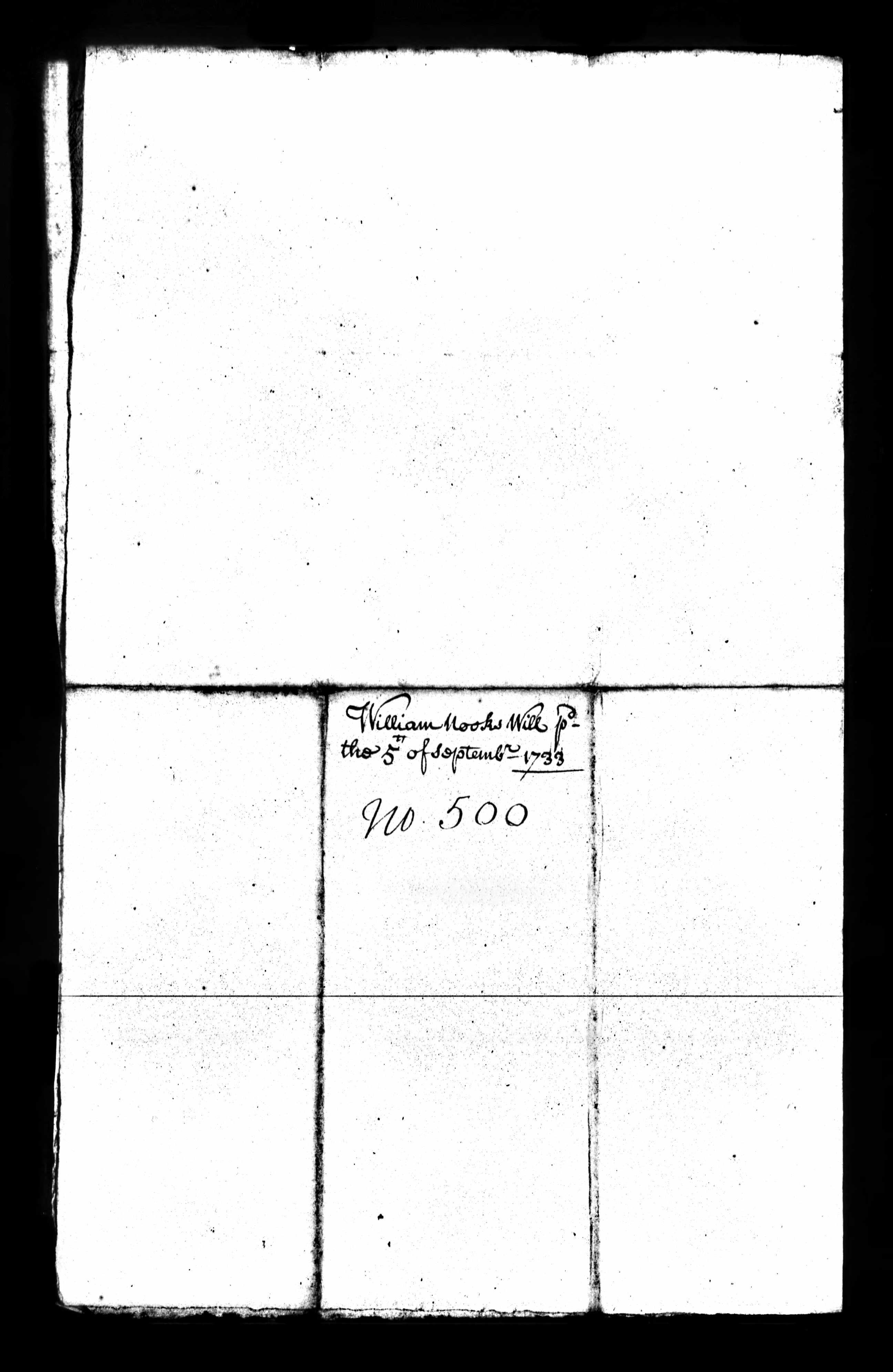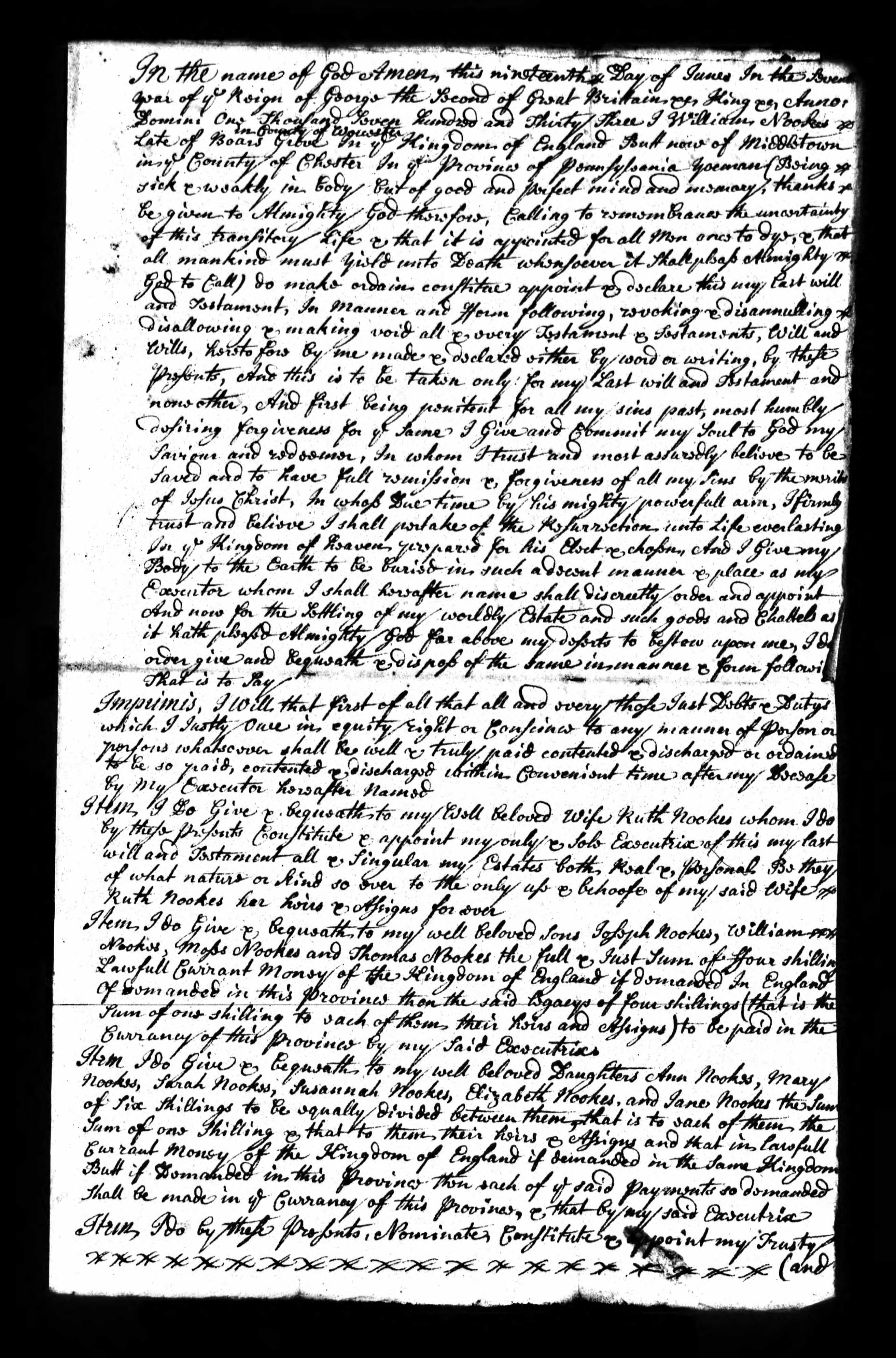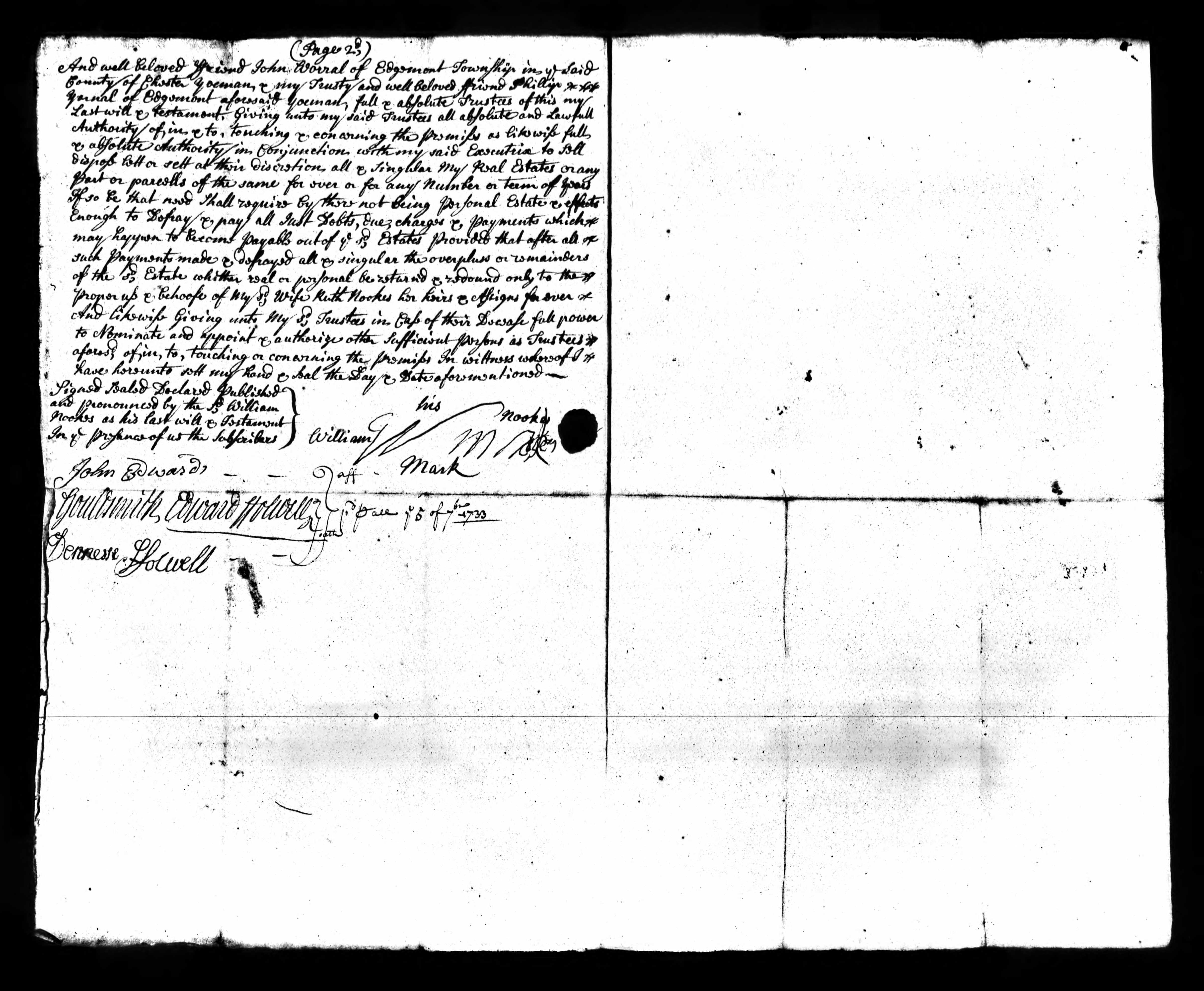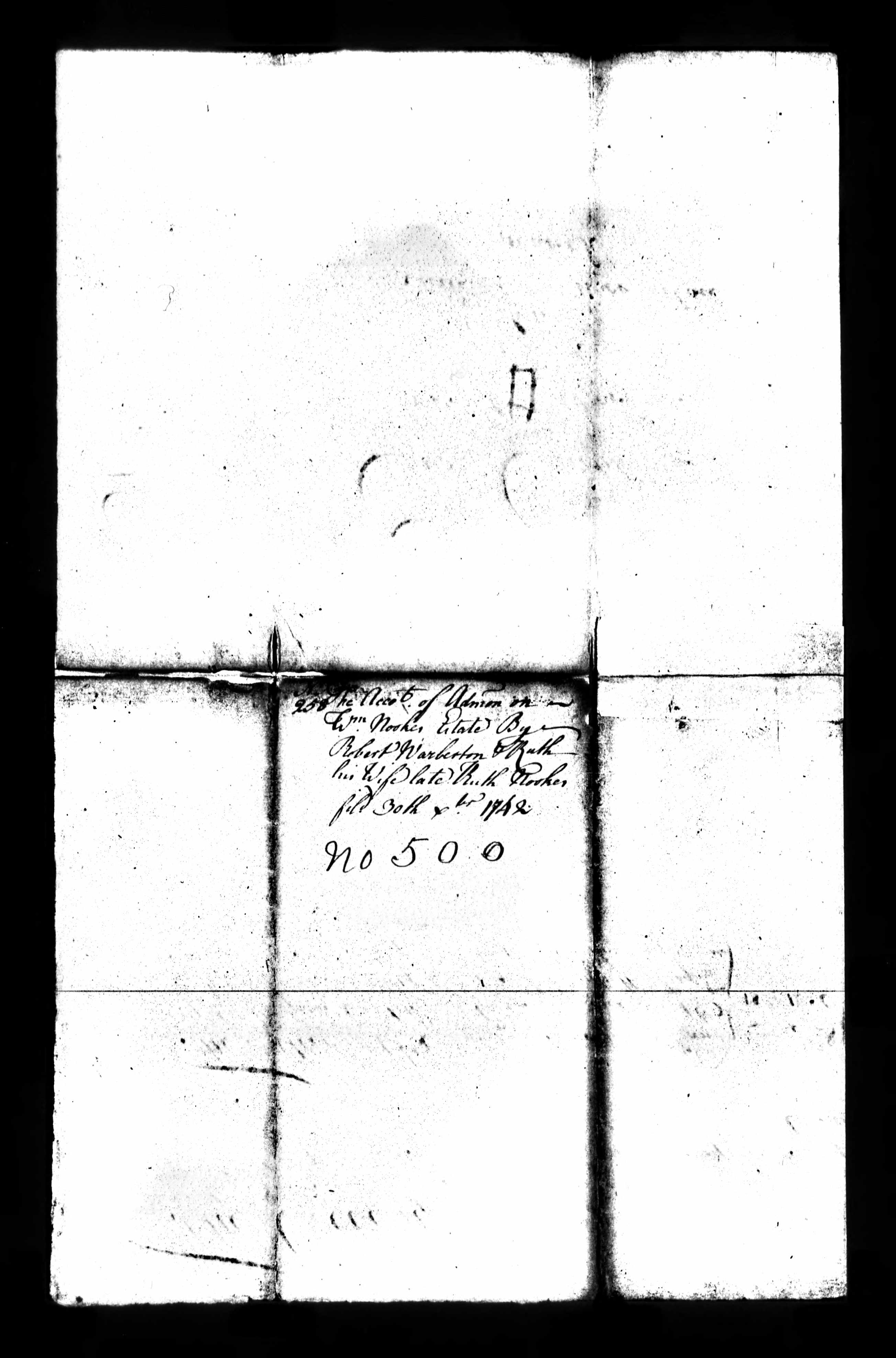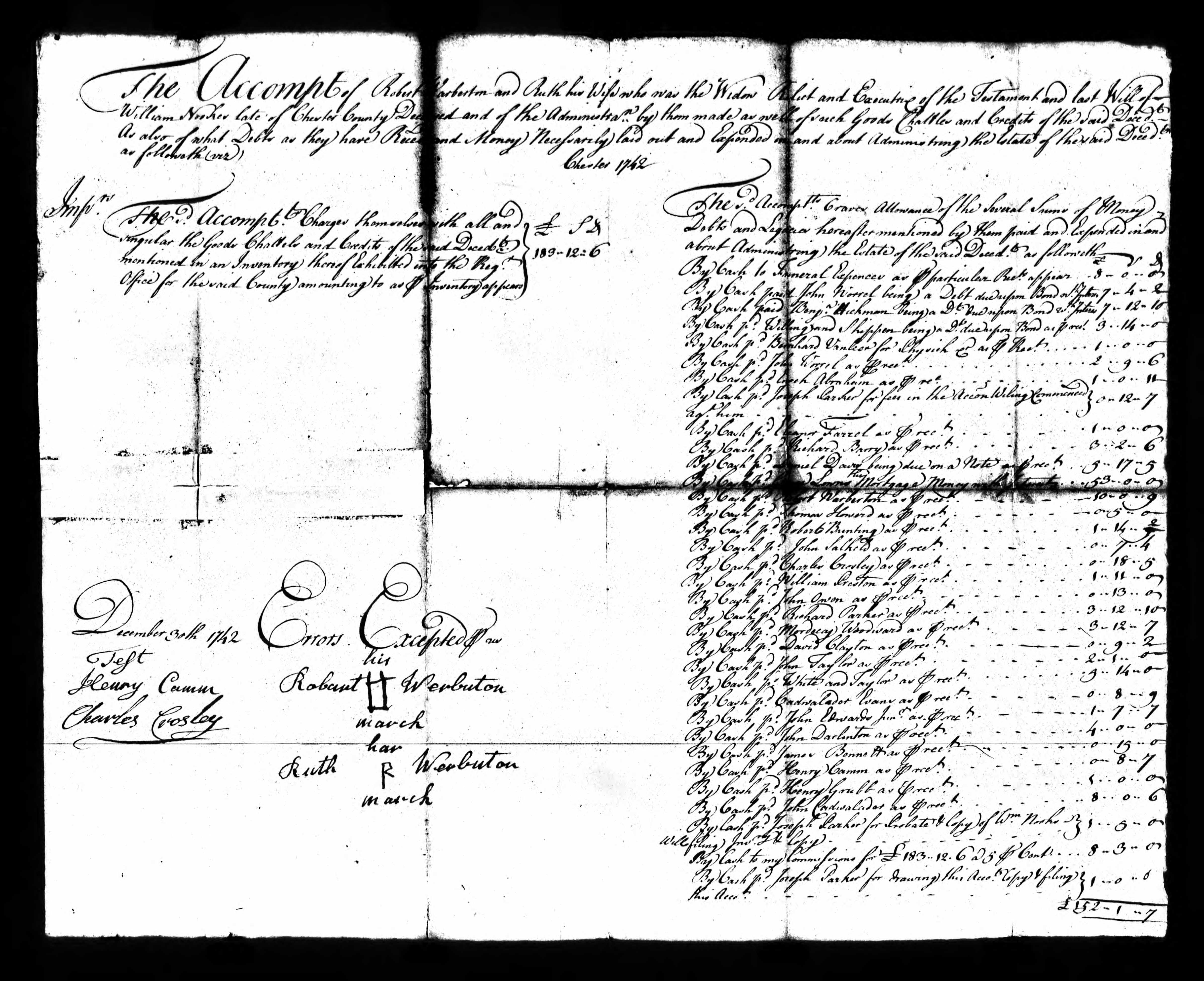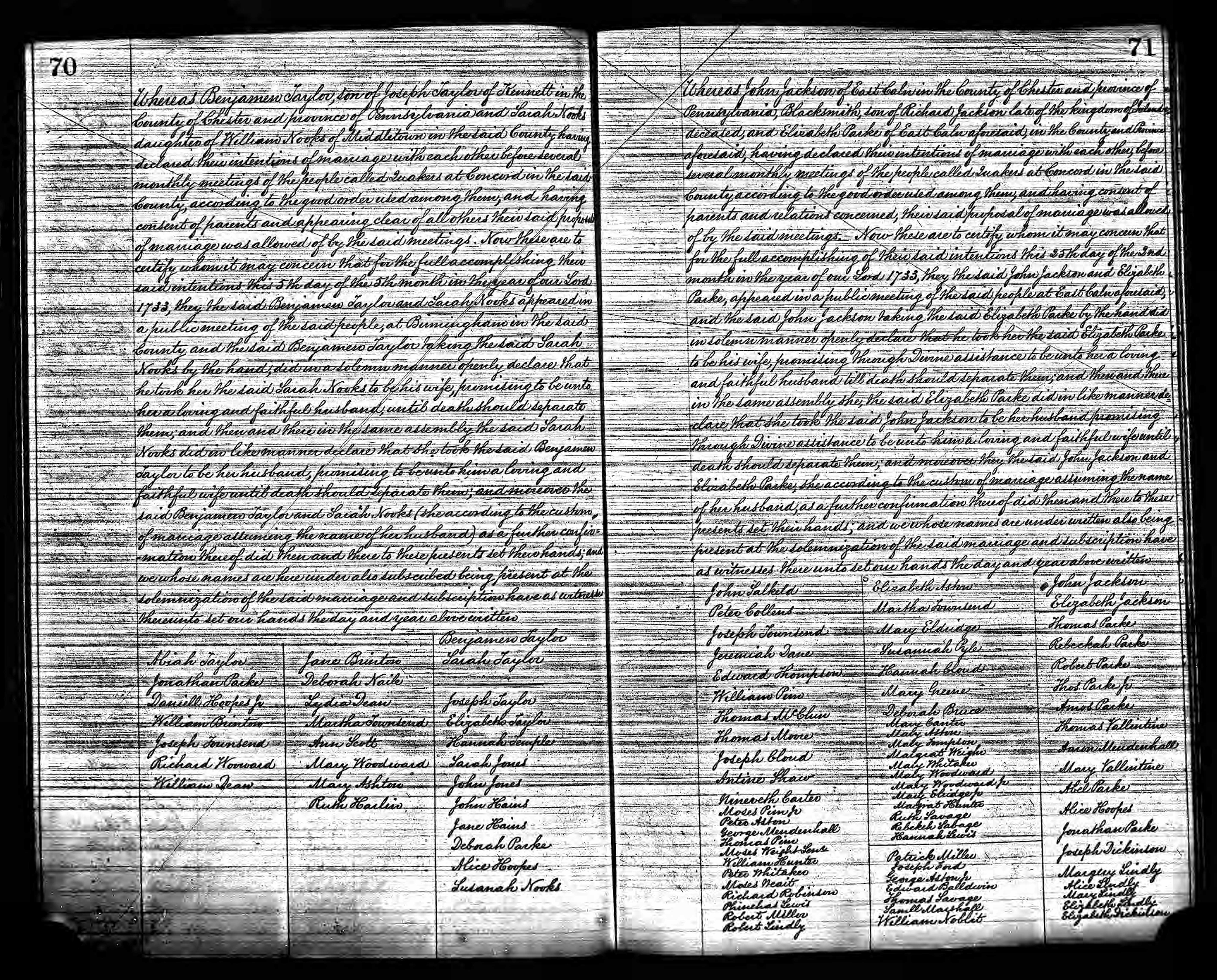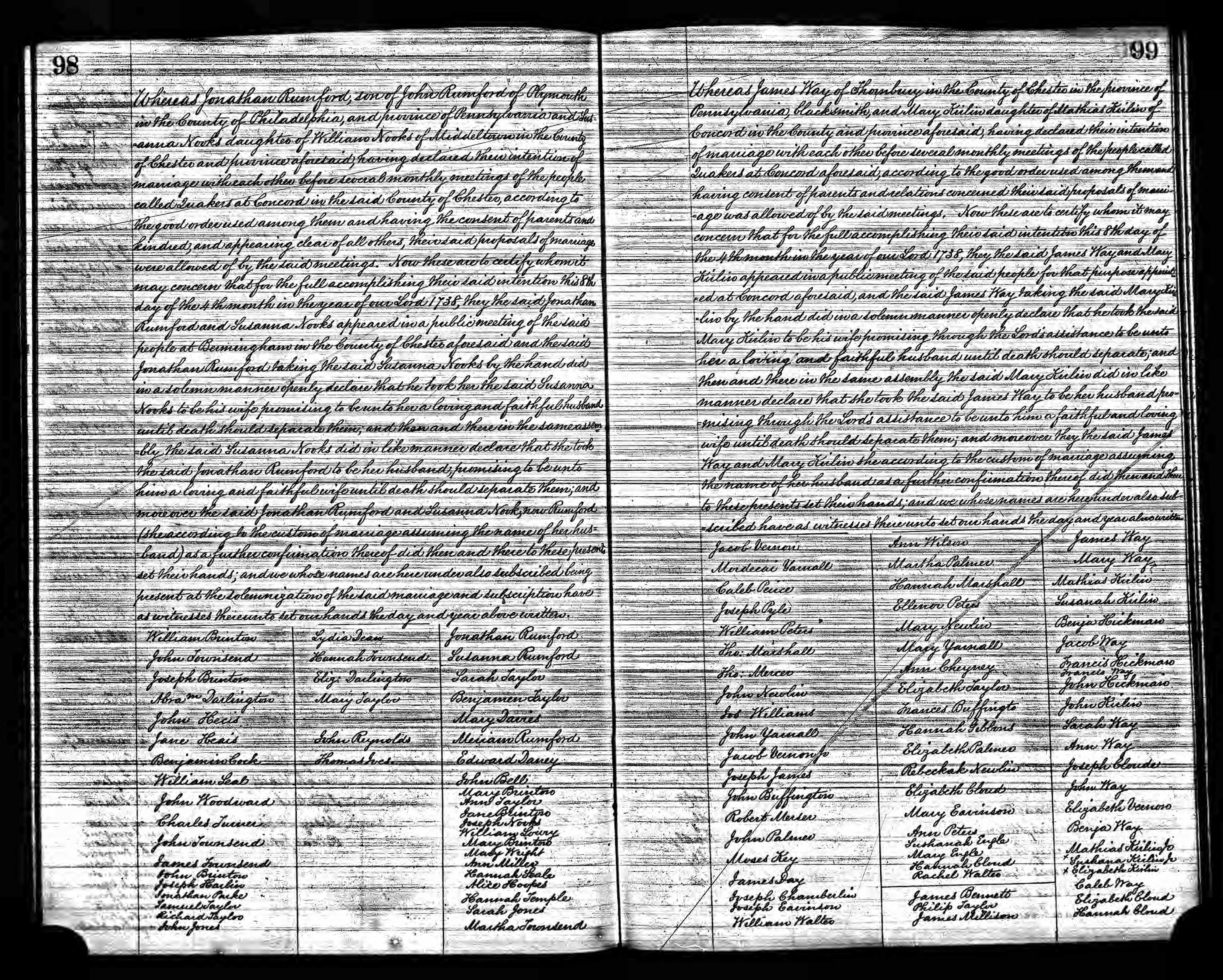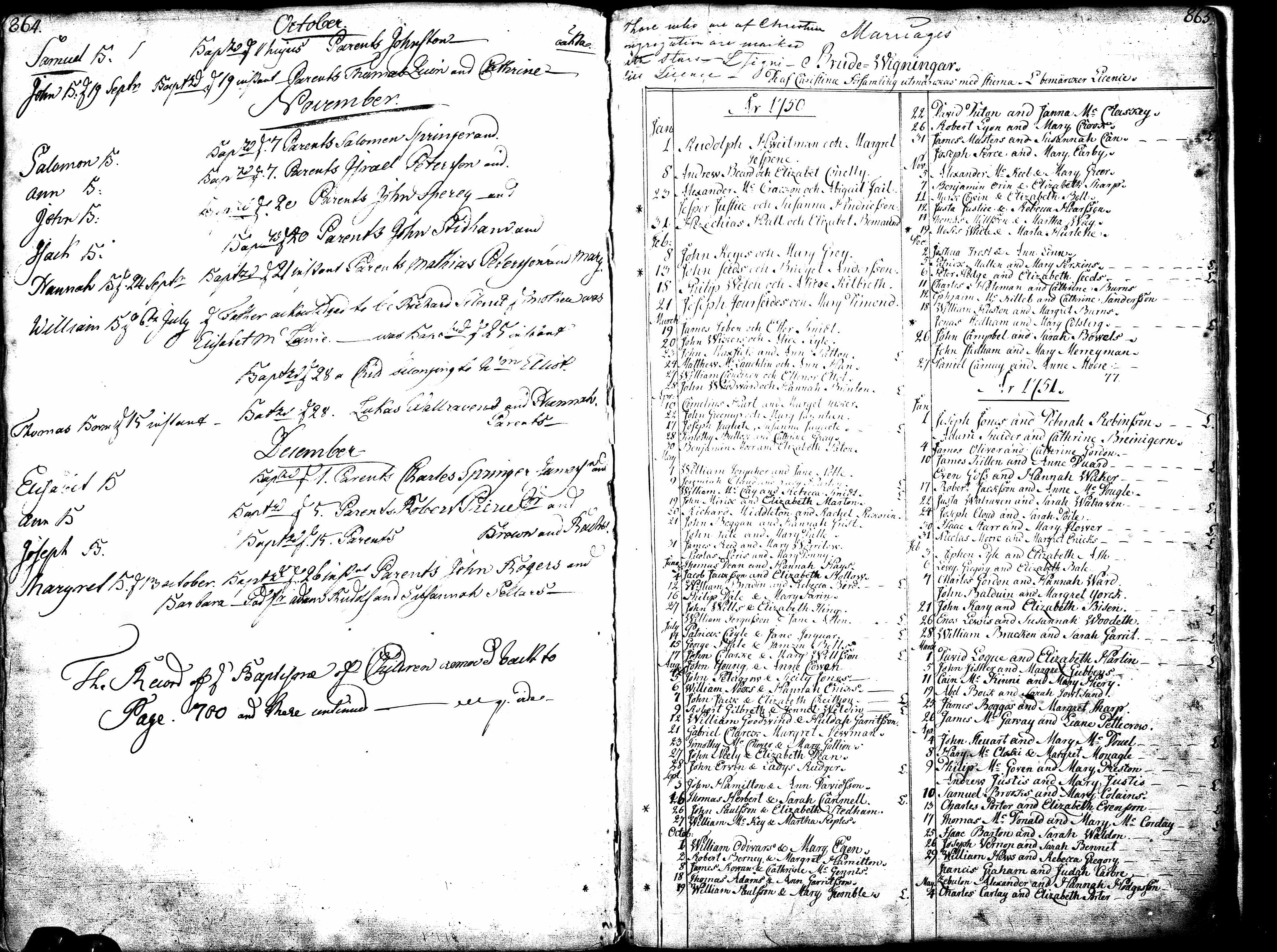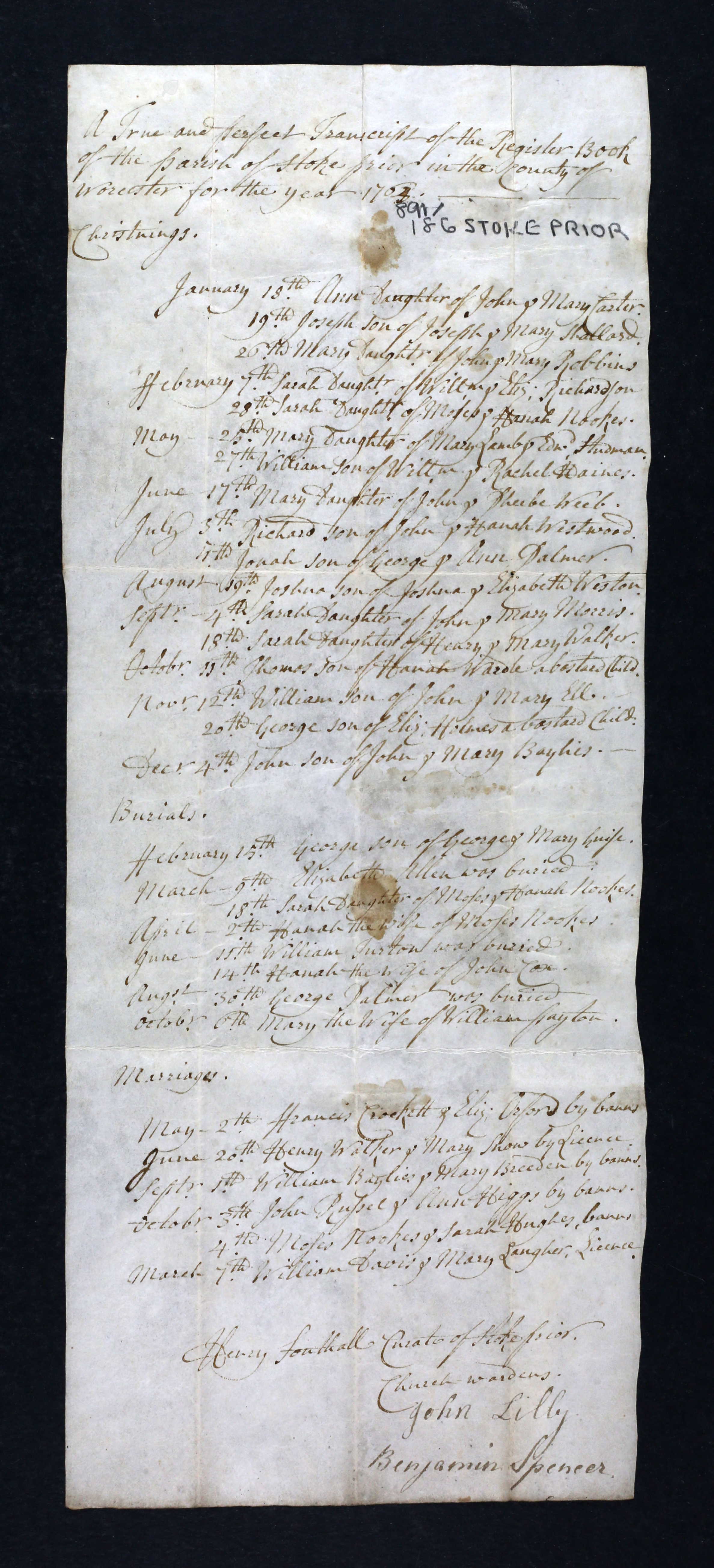William NOOK married Elizabeth SIDDON, a member of the Society of Friends or 'Quakers', on 25 Feb 1707/08 in Wombourne, Staffordshire. This marriage appears to be precipitated by the arrival of daughter Ann born 5 months later on 31 Jul 1708.
The marriage license states that William was from "Wergeley" or "Wergely" in the parish of Kingswinford, and Elizabeth was a minor from Wombourne. The signature on this license is quite different to William's later signatures. It may be that the bondsman, Will NOOK, husbandman of Wergeley, was actually William's father, or it may indicate that William's handwriting was still improving.
Although not conclusive, his marriage to a Quaker and his later signature on the Codicil to the will of a Quaker, Martin BLICK, dated 12 Feb 1724/251, suggest that he was also a Quaker.
It's not clear why a Staffordshire-based family came to locate in Bromsgrove, but all ten of their children were born there between 1708 and 1726.
In about 1728 William emigrated to the American Colonies. He settled in Middletown Township, Chester Co., Pennsylvania. He was accompanied or later joined by daughters Sarah and Susannah, and son Joseph. Both daughters would eventually marry into Quaker families, while Joseph would witness one of these marriages.
On 8 Jun 1730, William and his 'wife' Ruth bought 119 acres of land in Middletown Township, Chester County, Pennsylvania (now part of Delaware) for the sum of £80 9s 6d.and established a plantation.
William died in 1733. He left almost all of his estate to his 'wife' Ruth, with his ten children receiving just 1 shilling each, presumably to prevent any further claim on the estate. An inventory of his possessions (excluding real estate) was taken at his death that amounted to £188.
By the time a final account of the probate was settled in 1742, Ruth had married Robert WARBERTON. When Robert died in 1760 he willed the plantation to Ruth. His son William WARBERTON received £5 and some of his personal effects.
Ruth died shortly after leaving the estate to her son Henry TOMSON. Neither Elizabeth nor William's ten children ever benefited from his wealth, including any portion that had come to the family from Elizabeth.
My best interpretation of the known facts is that the original plan was for the whole NOOK family to emigrate to the American colonies. Perhaps a party was assembled with William leading the way with three of his working age children, leaving his wife with the two eldest daughters to subsist and care for the younger children until old enough to travel.
The widow Ruth TOMSON and her son Henry may have been innocent members of the same organised party, or had emigrated earlier. Its also possible that she was a maid in the NOOK household and went with William to care for the children and keep house.
I wonder whether the reality of frontier life had dashed any New World dreams William had harboured - who knows what he'd been sold when deciding to sign up - and he may have realised that he would never be able to afford the transport costs and provide for another 8 family members on the income of his farm. Meanwhile William and Ruth may have found consolation in each others company, and realising they already had a family around them, assumed the status of husband and wife.
Meanwhile, Elizabeth, left in England, would not have had the means to follow on her own, and once any subsistence funds left with her had been spent, she and the remaining children were left at the mercy of the Overseers of the Poor.
William's birth and parentage
There's no clear evidence of William's age on any known document. If aged 21 and over when he married Elizabeth then he would have been born before February 1686/87.
Possible Staffordshire baptisms:
- 21 Sep 1680 Wolverhampton by William NOCK
- 22 Feb 1680/81 Penkridge by Richard NOCK (18 miles)
- 27 Nov 1681 Wolverhampton by William NOCK
- 11 Dec 1682 Pattingham by George and Mary NOCK (8 miles)
Possible Worcestershire baptisms:
- 20 Mar 1681/82 in Worcester by John NOAKES
Given the Quaker links the Quaker records should be searched for any clues.
A William NOCK was baptized by William and Elizabeth NOCK in Trysull, Staffordshire on 16 Oct 1691. Seisdon, where Elizabeth SIDDON was born, and Trysull are adjacent villages, 1 mile apart. In February 1707/08, this William would have been 16 years old (if baptized soon after birth), however his minority was not mentioned on the marriage license. A William NOCK, labourer of "Seasdon in the Parish of Trysull", died intestate in 1704 with administration passing to his relict Elizabeth NOCK. His inventory was taken on 7 Mar 1703/04 and amounted to £17 3s 6d. He had one cow, two heifers, two calves, two horses and seventeen sheep. He also owned a tumbrel, plow, farrows and other implements of husbandry. Being intestate suggests the deceased died unexpectedly, so more likely that this was young William's father. In which case it's unlikely that William could have entered into a marriage bond on his own behalf aged just 16, and its unlikely that his minority would have been overlooked when Elizabeth's was noted.
A William NOCK, glassmaker of Kingswinford, also died intestate in late 1704. He was buried in Kingswinford on 3 Jan 1704/05. Administration passed to Zachary GUEST in January 1704/05 and probate was granted on 30 May 1705 to Eliza NOCK, the widow and relict of William NOCK, of 'Swinford Regis'. The estate was valued at £11 3s 2d.2 There is little other than the Kingswinford connection to link this to William.



